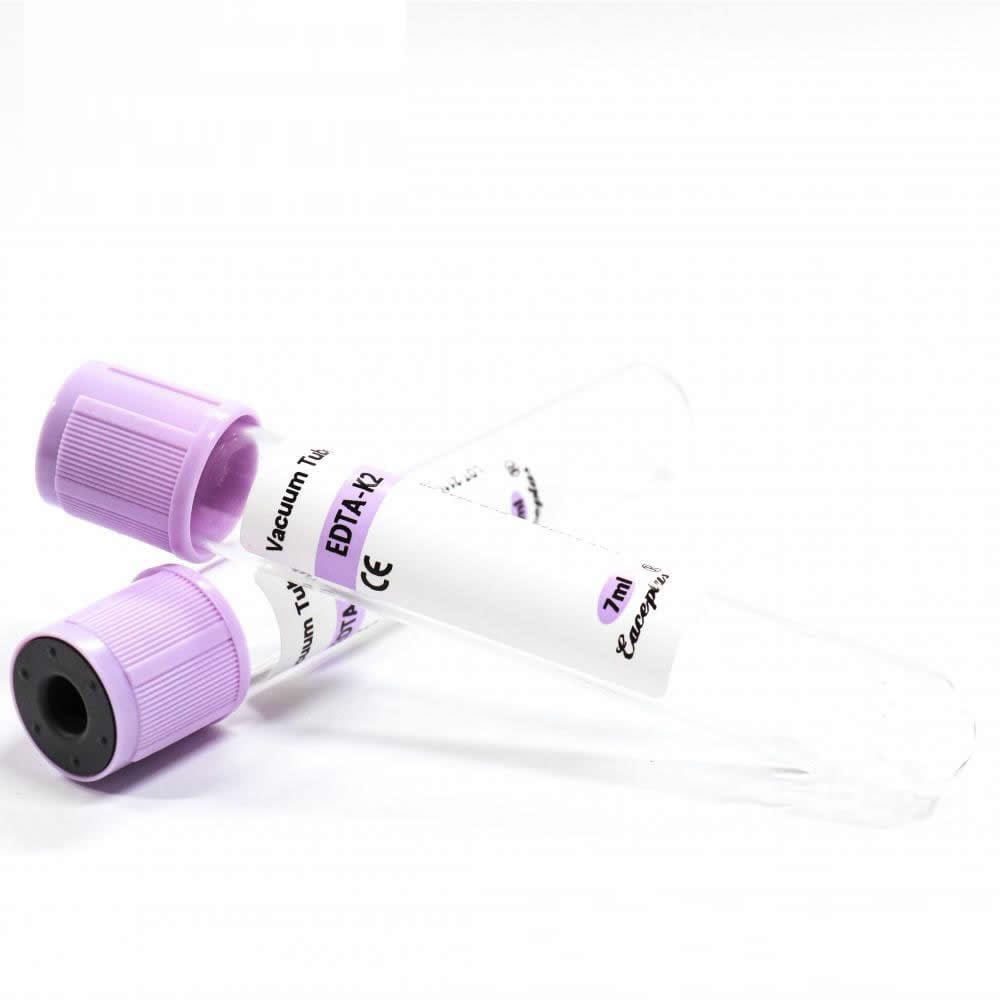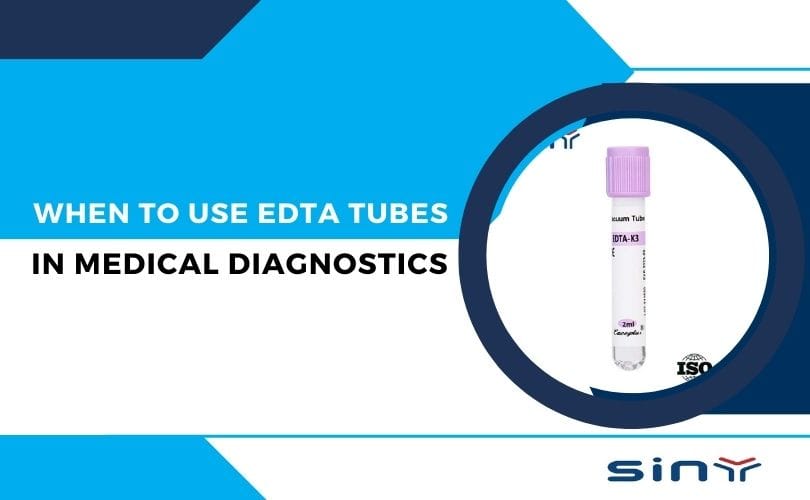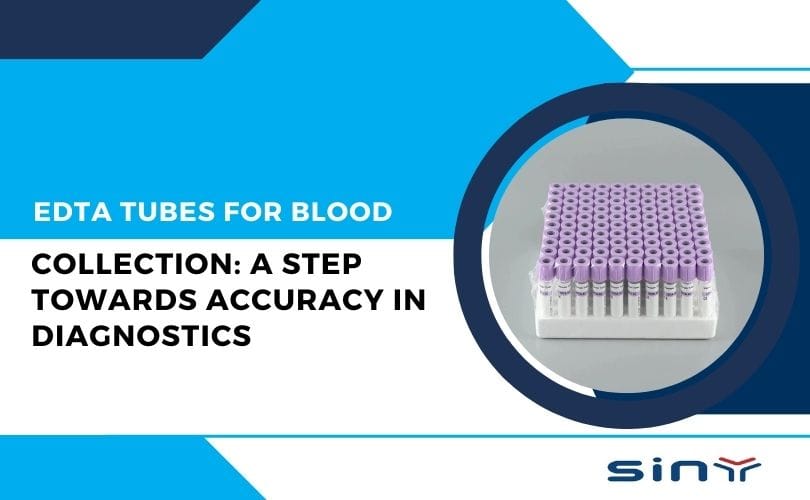Laboratories are the cornerstone of modern healthcare, and their efficiency often depends on the tools and technologies they employ. Among these tools, EDTA (Ethylenediaminetetraacetic acid) tubes are integral to blood sample collection and analysis. These specialized tubes, widely used in haematology, revolutionize how labs handle and process blood samples by maintaining their integrity for accurate results.
In this blog, we’ll dive deep into the top 5 benefits of using EDTA tubes in laboratories, explaining why they’ve become a staple for professionals around the globe. We’ll also touch on how these tubes, like the ones offered by Sinymedical, align with industry standards and enhance lab workflows.
Introduction to EDTA Tubes
Ethylenediaminetetraacetic acid (EDTA) tubes are specialized blood collection vessels widely used in clinical laboratories. These tubes contain EDTA, a potent anticoagulant that prevents blood from clotting during and after collection. The use of EDTA tubes is crucial for various haematological tests, ensuring the accuracy and reliability of diagnostic results. This article explores the top five benefits of EDTA tubes in laboratories, highlighting their significance in modern medical practices.

Benefits of Using EDTA Tubes
Prevention of Blood Clotting – Ensuring Sample Usability
One of the most critical challenges in blood sample collection is preventing clotting. Blood naturally begins to clot when it leaves the body, which can interfere with laboratory analyses, especially in haematology tests. EDTA tubes solve this problem using an anticoagulant (EDTA), which binds calcium ions in the blood. Calcium is a critical player in the clotting process, so by chelating it, EDTA effectively halts clot formation.
How Does This Help?
- Unclotted blood samples: Clot-free samples ensure accurate cell counts and prevent delays in testing.
- Streamlined workflows: Laboratory technicians save time by avoiding the tedious task of handling unusable clotted samples.
- Optimized sample storage: EDTA prevents clotting even during sample transport, preserving usability over extended periods.
Laboratories worldwide trust EDTA tubes, like those available at EDTATube, for consistently reliable results.
Preservation of Cellular Integrity
Once blood is drawn, cellular degradation can start almost immediately. Red blood cells (RBCs), white blood cells (WBCs), and platelets are susceptible to environmental changes, making preservation crucial for accurate analysis. EDTA tubes are designed to stabilize blood cell morphology, ensuring that cellular structures remain intact for testing.
Critical Advantages of Cellular Preservation:
- Accurate results: When cells remain intact, differential WBC counts and platelet analysis tests are reliable.
- Minimized artefacts: EDTA reduces the risk of hemolysis (breaking of RBCs) and other sample artefacts.
- Extended analysis window: Labs have more time to process samples without compromising accuracy.
For medical facilities processing high volumes of blood samples, this feature of top EDTA tubes can be a game-changer. The Sinymedical EDTA Tubes are engineered to meet these needs, offering unmatched quality and reliability for preserving cellular components.
Improved Accuracy in Diagnostics
In modern diagnostics, accuracy is non-negotiable. The reliability of test results directly impacts patient care, guiding physicians in making critical decisions. EDTA tubes are pivotal in achieving diagnostic precision, especially in haematology and molecular testing.
Here’s why EDTA tubes improve accuracy:
- Stable blood composition: With EDTA’s anticoagulant properties, blood composition remains consistent from collection to analysis.
- Reduced interference: EDTA prevents platelet aggregation and activation, ensuring that platelets and other blood components can be analyzed in their natural states.
- Enhanced compatibility: EDTA suits various advanced diagnostic methods, including flow cytometry and DNA/RNA analysis.
This benefit is particularly critical for hospitals and research labs that rely on cutting-edge technologies. EDTATube offers products that meet international standards, ensuring optimal diagnostic outcomes.
Versatility Across Applications
While EDTA tubes are primarily known for their role in haematology, their versatility also extends to other domains. They are widely used in:
- Molecular biology: EDTA stabilizes DNA and RNA in blood samples, making the tubes ideal for genetic testing and research.
- Blood banking: EDTA tubes are often employed in cross-matching and blood typing procedures.
- Flow cytometry: The anticoagulant properties of EDTA make it perfect for cell-based assays.
Why Versatility Matters:
With healthcare advancing rapidly, labs are expected to process various tests efficiently. Using tools like EDTA tubes that serve multiple functions helps streamline operations while reducing costs. The Sinymedical EDTA Tubes are specifically designed to support these varied applications, giving labs the flexibility they need to thrive.
Cost-Effectiveness
For laboratories, efficiency and cost-effectiveness go hand in hand. EDTA tubes help labs avoid unnecessary expenses associated with re-draws or repeated tests by preventing sample rejection due to clotting or degradation.
How EDTA Tubes Save Resources:
- Less sample wastage: Fewer clotted or degraded samples mean fewer re-collection efforts.
- Streamlined logistics: Sample stability during transport ensures labs can process tests without delays, even across long distances.
- Reduced labour costs: Time spent troubleshooting poor-quality samples translates to lower operational expenses.
When labs use high-quality EDTA tubes, like those from Sinymedical, they enhance patient outcomes and optimize their bottom line.
Final Thoughts
EDTA tubes have redefined laboratory workflows by providing unmatched reliability and efficiency. From preserving cellular integrity to improving diagnostic accuracy, their benefits make them indispensable in modern healthcare. Whether managing a busy clinical lab or conducting advanced research, investing in high-quality EDTA tubes, like those offered by Sinymedical, is essential for delivering accurate and timely results.
Ready to elevate your lab’s performance? Check out the full range of EDTA tubes at EDTATube.com today!
Frequently Asked Questions (FAQs)
What is the primary use of EDTA tubes in laboratories?
EDTA tubes are primarily used in haematology to prevent clotting and preserve cellular morphology in blood samples. They are also widely Benefits of Using EDTA Tubes in molecular biology and blood banking.
Are EDTA tubes compatible with all types of diagnostic tests?
While they are ideal for haematology and molecular biology, EDTA tubes are unsuitable for coagulation studies, as the anticoagulant can interfere with clotting assays.
How long can blood samples in EDTA tubes remain stable?
For most haematology tests, EDTA tubes maintain sample integrity for up to 24 hours. However, specific tests may require analysis within shorter time frames.
Why are EDTA tubes purple in colour?
The purple cap is a standardized colour coding to indicate that the tube contains Ethylenediaminetetraacetic acid as an anticoagulant. This coding helps technicians quickly identify the type of tube for specific tests.
What are the alternatives to EDTA tubes?
Alternatives include heparin tubes and citrate tubes for other applications like coagulation studies or plasma preparation. However, benefits of using EDTA tubes remains the gold standard for haematology.







